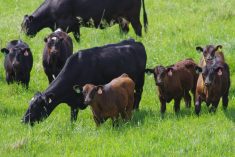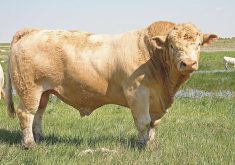Picking the world’s most important food crops is no small feat, given tastes differ around the world and there are many ways to measure value.
But Ernest Small had one fundamental criteria in mind when he wroteTop 100 Food Plants: The World’s Most Important Culinary Crops.
“Obviously, we can rank them on a dollar-value basis, on a dry-weight basis, or on a food-calorie basis,” Small said in an interview.
“These are plants so important that basically, if they vanished, there would be widespread starvation, either because the food plants themselves are staples or because they are so important as a source of income.”
Read Also

Grazing ‘sweet spot’ boosts pasture performance
Timing-focused approach to pasture management touted to boost forage growth, livestock gains while also cutting farmer labour and inputs
Small, principal research scientist with the research branch of Agriculture and Agri-Food Canada in Ottawa, began by reviewing work by other researchers in 1990. They selected important plant species by their contribution to at least 90 per cent of the plant food supply within every country in the world. Small’s own analysis actually resulted in 93 top food plant species, with seven species, such as the ancient grain teff (a staple in Ethiopia) and seaweed, added to round out the top 100.
Small said he’s always been intrigued by how humanity came to be so highly dependent on a relatively small range of food plant species. In our early evolutionary history, tens of thousands of edible plants sustained us and more than 20,000 plant species have been used as food throughout human history. But over time, he said, cultivation of certain species has led to the filling of niches, and pushed others aside.
“Once a crop has been domesticated, that niche is filled,” said Small.
A good example is the potato versus the barely-known Apios, he adds. The latter is a North American wild plant producing little tubers which taste a lot like potatoes. Had the potato never become domesticated, the world might instead be eating this groundnut in vast quantities.
“That’s pretty much the reason why introducing new foods is really tough,” said Small.
The saskatoon berry is an example of a lesser-known plant food now vying for status with other more predominant berry fruits, he said.
Specialization
Only about 150 food plants have actually entered world food commerce, with just 12 species now providing 75 per cent of all food for humans on earth. Rice, wheat and other members of the grass family (including corn/maize, barley, sorghum, millet, oat, rye and sugar cane) furnish 80 per cent of calories consumed by humans. Of these, wheat, rice and corn account for about 60 per cent of the calories and 56 per cent of the protein that humans get directly from plants.
The book also shows many of these top foods have been so for a very long time.
“When you analyze the history of our major crops, virtually every important crop in the world, from a food point of view, was domesticated, or at least utilized hundreds of years ago,” said Small.
“That’s not to say there’s nothing new in the world. But it is to say that human nutrition has not necessarily changed that much.”
What concerns Small are the looming threats to this food supply. The world has basically run out of prime agricultural land and faces the spectre of water and fuel shortages. Meanwhile, there are more and more mouths to feed.
“The basic fact is we’re going to need more food,” said Small. “So I do think we’re in for difficult times.”
At least for the next several decades, we are likely to remain dependent on this traditionally grown, and relatively narrow, range of food plant crops.
“But that is going to mean an increasing use of and conversion of marginal lands for agriculture… bad news for biodiversity and the environment,” said Small.
Small predicts a reduction in meat consumption, and greater dependency on plant foods.
“I speculate that alfalfa burgers are going to become a big hit,” he said, only half-jokingly.
The 656-pageTop 100 Food Plantsis a massively detailed and lively read, covering all categories of food plants, from cereals to vegetables as well as herbs, spices, beverage plants and sources of industrial food extracts, with details on their history, economic and social importance as well as culinary uses. An introductory chapter discusses nutritional and other fundamental scientific aspects of plant foods.
The book earned Small the prestigious Lane Anderson Award for Canadian Science Writing last year. Published by the National Research Council of Canada,Top 100is a reference guide for specialists in agricultural areas, but gardeners, cooks, and those interested in human health as it relates to diet will also find the book appealing.
———
“Theseareplantssoimportantthatbasically,iftheyvanished,therewouldbewidespreadstarvation,eitherbecausethefoodplantsthemselvesarestaplesorbecausetheyaresoimportantasasourceofincome.”
ERNEST SMALL
AUTHOUR OF TOP 100 FOOD PLANTS














